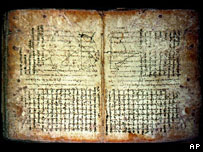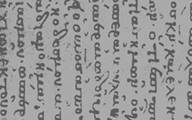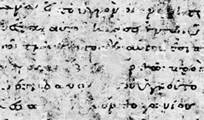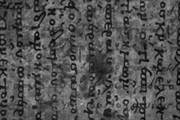27 August 2007
Born in Sicily in 287 BC, Archimedes is considered the greatest mathematician and physicist in the ancient world. Legends about his life abound.
A series of hidden texts written by this Greek mathematician are being revealed by Scientists at the Stanford University Linear Accelerator Center who they used a non-destructive technique known as X-ray fluorescence, to reveal the text as part of an ongoing study of the famous scholar's hidden work.
Until now, the pages have remained obscured by paintings and texts laid down on top of the original writings.
The writings include the only Greek version of On Floating Bodies known to exist, and the only surviving ancient copies of The Method of Mechanical Theorems which proved to contain diagrams, equations, and previously unknown letters and the Stomachion.
The original texts were transcribed in the 10th century by an anonymous scribe on to parchment.
Three centuries later a monk recycled the manuscript to create a palimpsest.
To create a book, the monk cut the pages in half and turned them sideways.
The monks filled the recycled pages with Greek Orthodox prayers.
Later, forgers in the 20th Century added gold paintings of religious imagery to try to increase the value of the tome.
The result was the near total obliteration of the original texts apart from faint traces of the ink used by the 10th Century Scribe.
Bright light
Previously the privately-owned palimpsest has been investigated using various optical and digital imaging techniques.
However, much of the text remained hidden behind paint and stains.
The researchers have now turned to a technique known as X-ray fluorescence to tease out the final details of the writings.
The palimpsest contains pages from several bodies of work
The method is used in many branches of science including geology and biology. It has previously been used by other researchers to decode ancient texts.
The X-rays are formed in a synchrotronــ a particle accelerator that uses electrons traveling at close to the speed of light to generate powerful "synchrotron" light.
The light covers a wide range of the electromagnetic spectrum, including powerful X-rays, a million times more intense than a transmission X-ray used in medical imaging.

The palimpsest contains pages from several bodies of work
Glowing words
The technique is particularly useful for probing the palimpsest because the ink used by the scribe to record Archimedes' work contains iron.
The glowing words are displayed on a computer screen, giving the researchers the first glimpse of the text in nearly 800 years.
Each page takes 12 hours to reconstruct as the highly focused beam of X-rays, the width of a human hair, sweeps across the page.



Top: One of the available multi-spectral images of the palimpsest.
Middle and bottom: the separated Archimedes text and overwritten text, obtained by our decorrelation techniques.
Copyright: the Owner of the Archimedes Palimpsest.
Image capture: Rochester Institute of Technology and Johns Hopkins University.
References
http://news.bbc.co.uk/2/hi/science/nature/5235894.stm
http://dsc.discovery.com/news/2006/08/04/archimedes_his.html?category=history
http://www.ercim.org/publication/Ercim_News/enw58/salerno.html
http://www.abc.net.au/science/news/stories/s1385368.htm
Reda Kandil